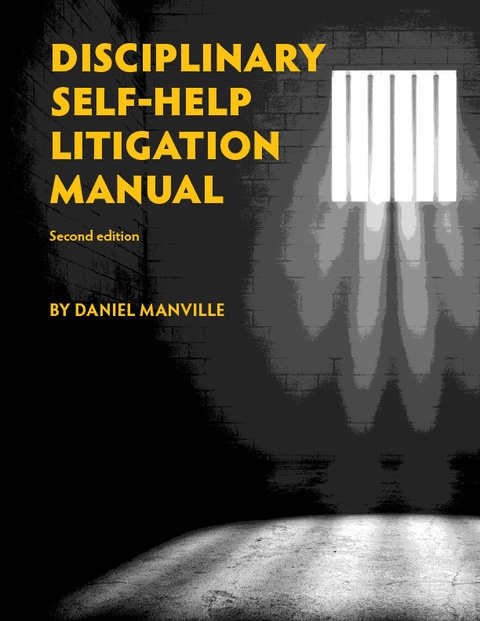Loaded on
Aug. 15, 2012
published in Prison Legal News
August, 2012, page 39
The First Circuit Court of Appeals reversed the grant of summary judgment to a physician assistant at the York County Jail (YCJ) in Maine, concluding that a material dispute existed as to whether the physician assistant acted with deliberate indifference to the serious medical needs of an HIV-positive detainee.
In April 2008, Raymond D. Leavitt, a Maine state prisoner, filed suit pursuant to 42 U.S.C. § 1983 and the Americans with Disabilities Act (ADA), seeking injunctive relief and monetary damages against various correctional officials and healthcare providers. He alleged that he was denied HIV treatment for the entirety of his 167-day stay at YCJ and for the first 17 months of his incarceration at the Maine State Prison (MSP), where medical care was provided by Correctional Medical Services (CMS).
Leavitt, who had been taking HIV medications before he was incarcerated, claimed that the delay in reinitiating his antiretroviral therapy for HIV resulted in short- and long-term negative consequences to his health.
Initially proceeding pro se, Leavitt eventually obtained the services of an attorney. In March 2010, the district court granted summary judgment in favor of the defendants, finding insufficient evidence that they had acted with deliberate indifference to Leavitt’s serious ...
Loaded on
Aug. 15, 2012
published in Prison Legal News
August, 2012, page 45
Federal prosecutors have charged the former mayor of Walnut Grove, Mississippi with sexually assaulting a prisoner while acting under color of law. He also was charged with telling the prisoner to lie during an investigation into the incident. [See: PLN, April 2012, p.1].
William Grady Sims, 61, was first elected mayor of Walnut Grove in 1981. He was accused of sexually assaulting a female prisoner held at the Walnut Grove Transition Center (WGTC) operated by GEO Group, the nation’s second-largest private prison company.
WGTC houses prisoners from the Mississippi Department of Corrections. Ironically, Sims was employed as WGTC’s warden in 2009 when he took the prisoner to a motel room and had sex with her.
Separately, state auditors found that Sims’ relationship with private prison firms was illegally costing local taxpayers. On October 25, 2011, State Auditor Stacey Pickering ordered Sims to repay $31,150 for ordering private prisons in the area to be serviced by city employees and equipment.
“The demand against Mayor Sims represents multiple instances where city employees were directed by the mayor to do work at a private prison facility in Walnut Grove,” Pickering said in a news release. “Taxpayers of Walnut Grove have been paying for ...
In the Stewart Detention Center in rural Lumpkin, Georgia, Pedro Guzman cleaned the communal areas, cooked, painted walls, ran paperwork and buffed floors. But Guzman was not brought into Stewart as an employee – he was a detained immigrant taking part in the detention center’s “voluntary” work program.
“I didn’t go more than a month without a job,” said Guzman, who spent almost 20 months waiting, and working, inside Stewart while his immigration case was resolved.
In private prisons around the country, immigrants languishing in detention centers are being put to work by profit-making companies like the Corrections Corporation of America (CCA) for far below the minimum wage. For doing a range of manual labor in the facility, the immigrants, many of whom are not legally permitted to work in the United States, are paid between $1-$3 a day.
The Obama administration’s move away from the workplace raids of the Bush years and toward an increasing reliance on Secure Communities, which critics say has functioned as a dragnet for immigrants who have committed low-level crimes or none at all, has flooded detention centers across the country.
Between 1996 and 2011, deportations increased by 400 percent and the Department of Homeland ...
by David M. Reutter
On November 8, 2010, Corrections Corporation of America (CCA) issued a press release announcing that the California Department of Corrections and Rehabilitation (CDCR) intended to award a new contract to the company, “to manage up to 3,256 offenders at CCA’s Crowley County Correctional Facility in Olney Springs, Colorado and CCA’s Prairie Correctional Facility in Minnesota.”
At the time, the announcement seemed like a safe bet. CCA already contracted with the CDCR to house around 10,000 prisoners in out-of-state facilities, stemming from an October 2006 state of emergency declared by then-Governor Arnold Schwarzenegger – a proclamation that remains in effect.
Further, in August 2009, as a result of the Plata v. Brown litigation, a federal three-judge panel ordered California to reduce its prison population by up to 44,000 prisoners within two years. [See: PLN, Sept. 2009, p.36]. One potential option for CDCR officials was to transfer even more prisoners out-of-state, to reduce overcrowding in California’s in-state prisons.
But then a funny thing happened. Not only did the CDCR not fill CCA’s Crowley County and Prairie Correctional Facilities with thousands of prisoners, but California has since announced plans to phase out its out-of-state prison contracts and bring its ...
Loaded on
July 15, 2012
published in Prison Legal News
July, 2012, page 45
Arizona Governor Jan Brewer and other state policymakers have been criticized for their close connections with private prison companies, including Corrections Corporation of America (CCA), the nation’s largest for-profit prison firm.
Brewer’s senior political advisor and 2010 campaign manager, Chuck Coughlin, founded Highground Public Affairs Consultants, which lobbies for CCA. Further, Brewer’s former deputy chief of staff for communications, Paul Senseman, lobbied for CCA through Policy Development Group, Inc. both before and after working for the governor; his wife, Kathryn Senseman, is a CCA lobbyist with the same company. CCA operates six facilities in Arizona although none currently house Arizona prisoners.
Florida-based GEO Group, CCA’s main competitor and one of the bidders for a state contract to manage 2,000 private prison beds in Arizona, has taken a page from CCA’s playbook. Since CCA apparently has the governor in its pocket, GEO Group decided to influence members of the legislature who have control over the state’s purse strings.
Lobbyists associated with GEO Group gave campaign contributions to House Speaker Andy Tobin and state Rep. John Kavanagh, Chairman of the House Appropriations Committee and outgoing Chair of the Joint Legislative Budget Committee. The contributions came from sources associated with Arizona-based consulting firm ...
Loaded on
June 15, 2012
published in Prison Legal News
June, 2012, page 22
A settlement has been reached in a class-action lawsuit challenging conditions at Pennsylvania’s Northumberland County Prison (NCP). Since the suit was filed in February 2008 on behalf of 12 prisoners by the Lewisburg Prison Project, NCP officials had disputed claims that the 134-year-old facility was unsafe and failed to provide adequate medical care.
The parties concluded that a settlement would be the best result and the County Commissioners approved a settlement agreement, arrived at following adversarial negotiations, in October 2010. The class received notice of the proposed settlement in February 2011, which was approved by the district court on April 29, 2011.
The first issue addressed in the 37-page settlement is the provision of medical and dental care. Under the agreement, a physician, physician assistant or certified nurse practitioner must be on site at NCP at least six hours per week when the average daily population is below 200 prisoners, and seven hours a week when the population exceeds 201 prisoners for six consecutive months. Medical personnel must also be on call seven days a week, 24 hours a day for emergencies.
A full-time registered nurse is to be on duty 40 hours per week, as well as a licensed ...
Loaded on
June 15, 2012
published in Prison Legal News
June, 2012, page 32
As previously reported in Prison Legal News, PLN associate editor Alex Friedmann, who owns a small amount of stock in Corrections Corporation of America (CCA), filed a shareholder resolution with the company in November 2011. The resolution requested that CCA issue reports every six months on its efforts to reduce incidents of prisoner rape and sexual abuse at its for-profit facilities, including statistical data related to all such incidents during each reporting period. [See: PLN, April 2012, p.14; March 2012, p.18].
According to Friedmann, who served six of his ten years in prison at a CCA-operated facility in Tennessee in the 1990s, the resolution was intended to prompt the company to focus on the issue of sexual assaults, particularly by CCA employees.
“If CCA has to report this information they will have a greater incentive to reduce rape and sexual abuse because it will make the company look bad if they have very high numbers,” he said. “And if they have to report this, the public, i.e., CCA shareholders, will be able to judge the effectiveness” of the company’s efforts.
In a letter to CCA’s board of directors, Friedmann wrote, “My resolution could not be filed with any other company ...
Loaded on
June 15, 2012
published in Prison Legal News
June, 2012, page 47
A $500,000 settlement has been reached in a federal lawsuit involving the death of a prisoner at Pennsylvania’s Fayette County Prison. Terry Johnson, 48, died in his cell in February 2007 after he was denied medical care.
The suit, filed by Johnson’s wife, Lorraine, named several prison employees and the ...
A Tennessee federal court denied a private prison warden summary judgment on an excessive force claim for assaulting a handcuffed prisoner.
James Ingram was a prisoner at the Hardeman County Correctional Facility (HCCF) in Tennessee, which is operated by Corrections Corporation of America (CCA), America's largest private prison operator.
On May 16, 2007, approximately 15 HCCF guards were injured when a disturbance involving 186 prisoners and 200 staff erupted in the chapel. Ingram claims that he was returning to his housing unit and was not involved, but prison officials think otherwise.
Former HCCF Warden Glen Turner identified the prisoners involved as possible Vice Lords gang members. Ingram's "name was at the top of a list of Vice Lords leaders given to Turner… by the HCCF Security Threat Group Coordinator." Turner believed Ingram "was directly involved in the disturbance and may have instigated it."
Ingram was handcuffed and taken to a backroom where HCCF officials demanded that he identify those responsible for the disturbance. Turner admits that he attempted to "interview" Ingram immediately after the riot to discover his involvement and the reasons for the disturbance.
"During one portion of the interview I felt that Mr. Ingram was not understanding the ...
A federal investigation resulted in criminal charges against two employees of a Salt Lake City, Utah corrections center for federal prisoners.
A federal probe targeted Cornell Community Corrections Center, a private corporation that contracts to house prisoners who are released from prisons outside Utah. The Center also provides services to detainees who are released pending trial and federal probationers.
Center employees William Lynn Appawora, and Larry Lee Jensen, were accused of tampering with urine test records. Each of them was indicted on a charge of destruction, alteration or falsification of a record in a federal investigation. Both men face up to 20 years in prison and a $250,000 fine.
Source: The Salt Lake Tribune

